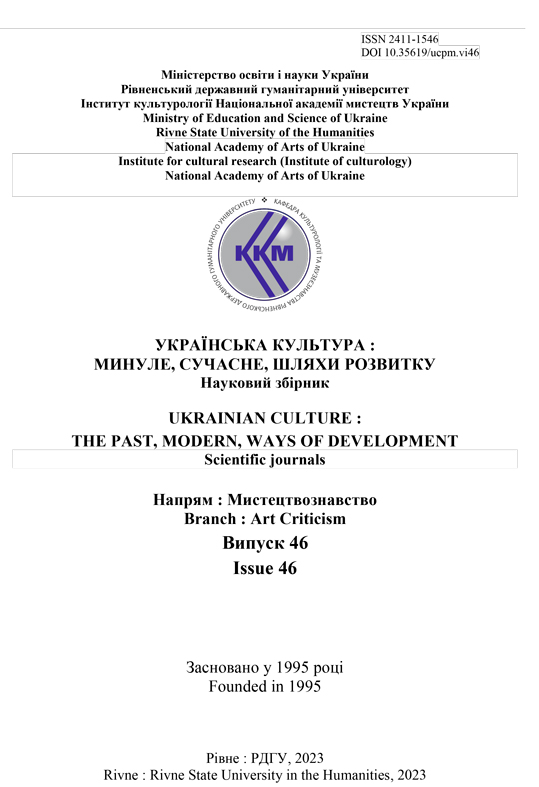SPECIFICITY OF THE TRANSCRIPTION AND INTERPRETATION OF FRENCH LUTE MUSIC OF THE BAROQUE ERA FOR BANDURA
DOI:
https://doi.org/10.35619/ucpmk.v46i.696Keywords:
French Baroque, Baroque lute music, style brisé, notes inégales, genre, style, expressive techniques, bandura, transcription for bandura.Abstract
The article is devoted to the study of the specifics of the transcription of lute music of the Baroque era for bandura. The peculiarities of the brisé style and the principle of inégalité are considered, as well as the aspects necessary for transcription and interpretation are highlighted.
The aim. Summarizing the principles of transcription of lute works into the modern notational system and outlining the specifics of transcriptions, as well as highlighting the general features of interpretation of lute baroque music on bandura.
The methodology employed, encompassing analysis, synthesis, comparison, and generalization, enables a thorough examination of diverse sources to articulate the distinctiveness of transcribing French lute baroque music and interpreting selected examples on the bandura. The results not only delve into the peculiarities of the brisé style and inégalité but also highlight the challenges in implementation while proposing practical solutions. The article provides a focused insight into the performance of inégales notes and systematically categorizes ornamentation in French Baroque lute music, with a specific focus on its application to the bandura.
Results. The peculiarities of the brisé style and the principle of inégalité are considered, and the aspects necessary for transcription and interpretation are highlighted. Implementation difficulties were noted, and ways to overcome them were suggested. Special attention is paid to the description of the performance of the inégales notes. A concise systematization of the ornamentation of the French lute of the Baroque era is presented and the peculiarities of its performance on the bandura are summarized.
The practical significance of this study is substantial, offering a valuable resource for performers, particularly bandura players, seeking to master the French Baroque lute repertoire. This research contributes to their musical knowledge and proficiency, enriching their understanding of Baroque music's cultural nuances.
The novelty of the study lies in its comprehensive exploration of the transcription and interpretation of French Baroque lute music specifically for the bandura, shedding light on the intricacies of the brisé style and the principle of
inégalité. By summarizing the principles of transcription into modern notation and emphasizing the unique features of
transcriptions, this research breaks new ground in facilitating a deeper understanding of the nuanced interpretation of
Baroque lute music on the bandura.




